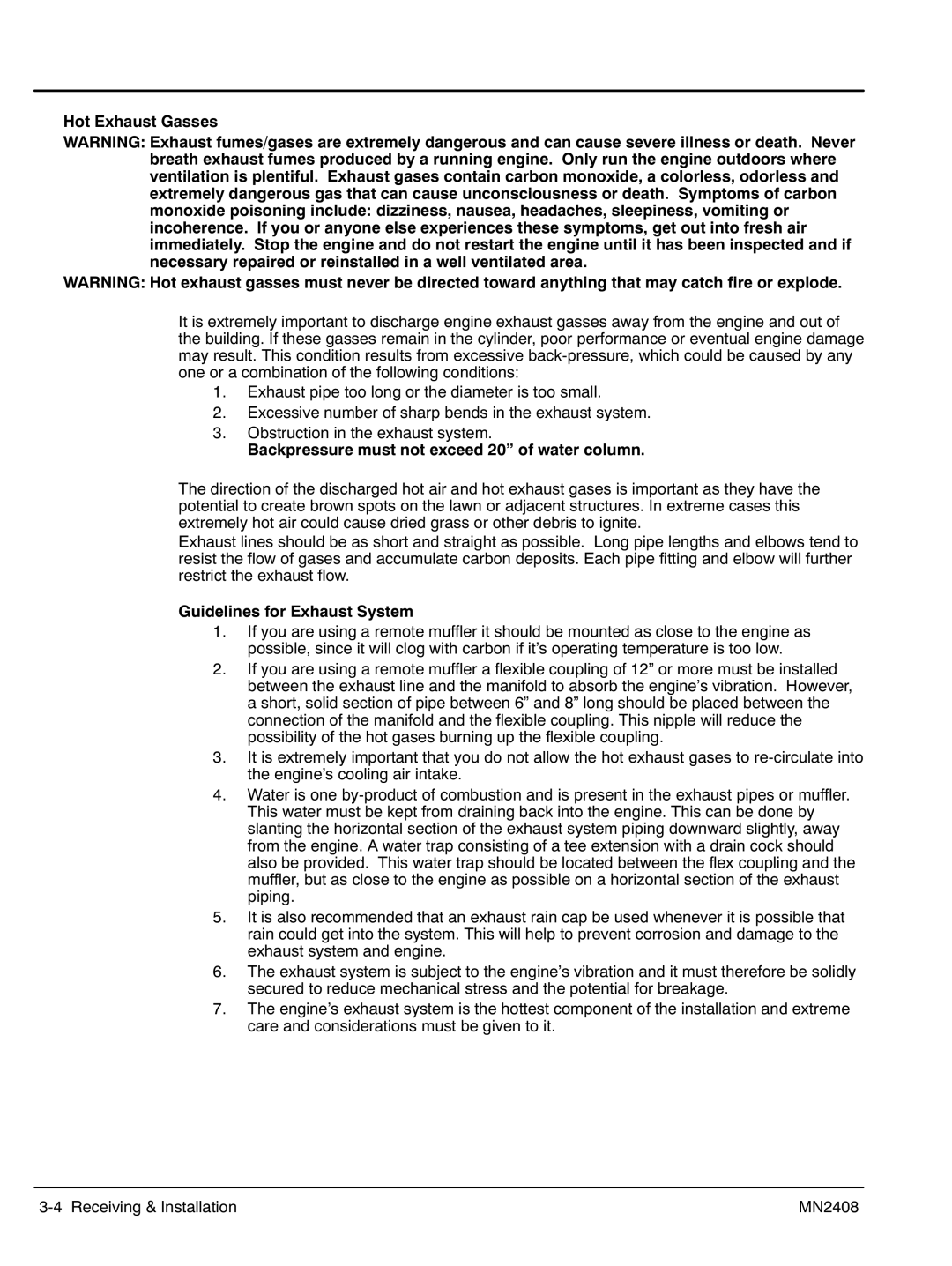
Hot Exhaust Gasses
WARNING: Exhaust fumes/gases are extremely dangerous and can cause severe illness or death. Never breath exhaust fumes produced by a running engine. Only run the engine outdoors where ventilation is plentiful. Exhaust gases contain carbon monoxide, a colorless, odorless and extremely dangerous gas that can cause unconsciousness or death. Symptoms of carbon monoxide poisoning include: dizziness, nausea, headaches, sleepiness, vomiting or incoherence. If you or anyone else experiences these symptoms, get out into fresh air immediately. Stop the engine and do not restart the engine until it has been inspected and if necessary repaired or reinstalled in a well ventilated area.
WARNING: Hot exhaust gasses must never be directed toward anything that may catch fire or explode.
It is extremely important to discharge engine exhaust gasses away from the engine and out of the building. If these gasses remain in the cylinder, poor performance or eventual engine damage may result. This condition results from excessive
1.Exhaust pipe too long or the diameter is too small.
2.Excessive number of sharp bends in the exhaust system.
3.Obstruction in the exhaust system.
Backpressure must not exceed 20” of water column.
The direction of the discharged hot air and hot exhaust gases is important as they have the potential to create brown spots on the lawn or adjacent structures. In extreme cases this extremely hot air could cause dried grass or other debris to ignite.
Exhaust lines should be as short and straight as possible. Long pipe lengths and elbows tend to resist the flow of gases and accumulate carbon deposits. Each pipe fitting and elbow will further restrict the exhaust flow.
Guidelines for Exhaust System
1.If you are using a remote muffler it should be mounted as close to the engine as possible, since it will clog with carbon if it's operating temperature is too low.
2.If you are using a remote muffler a flexible coupling of 12” or more must be installed between the exhaust line and the manifold to absorb the engine's vibration. However, a short, solid section of pipe between 6” and 8” long should be placed between the connection of the manifold and the flexible coupling. This nipple will reduce the possibility of the hot gases burning up the flexible coupling.
3.It is extremely important that you do not allow the hot exhaust gases to
4.Water is one
5.It is also recommended that an exhaust rain cap be used whenever it is possible that rain could get into the system. This will help to prevent corrosion and damage to the exhaust system and engine.
6.The exhaust system is subject to the engine's vibration and it must therefore be solidly secured to reduce mechanical stress and the potential for breakage.
7.The engine's exhaust system is the hottest component of the installation and extreme care and considerations must be given to it.
3‐4 Receiving & Installation | MN2408 |
